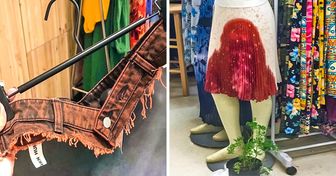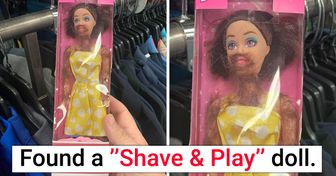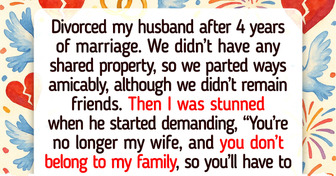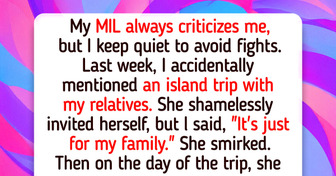15 People Who Can Stop Traffic With Their Unique Look

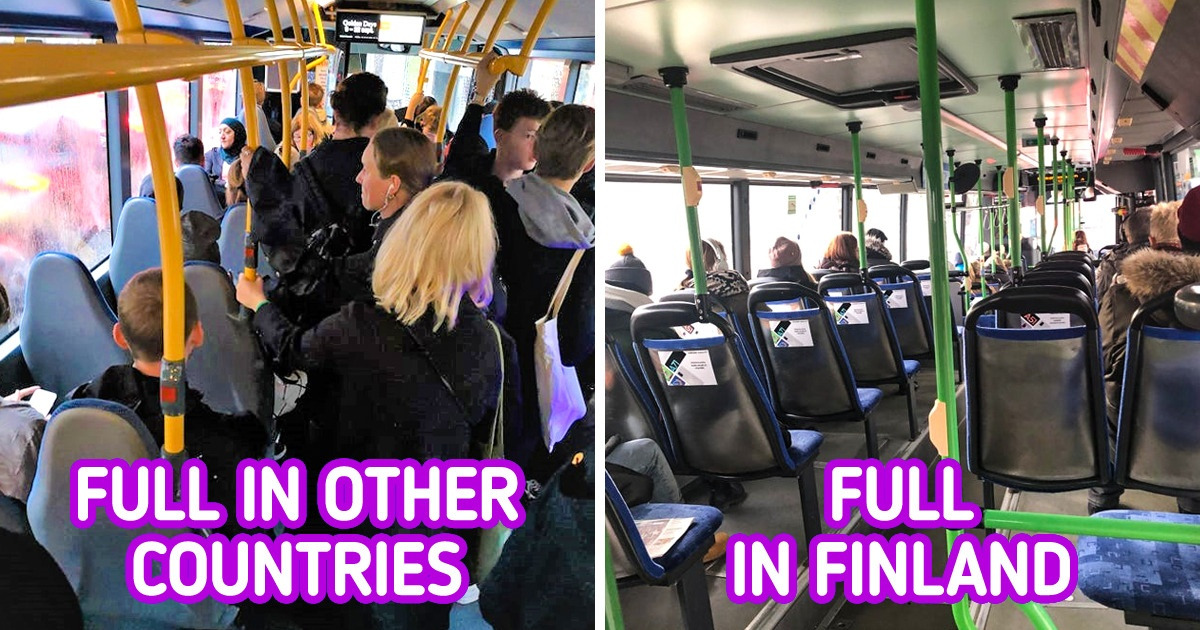
The number of inhabitants, territorial surface, neighboring countries, government system, and some other geographical characteristics is what we usually learn about a country when we study it at school or do a quick search in an encyclopedia. However, behind those numbers lies something that makes each and every country fascinating: its very own culture, habits, and customs. These are often very different from ours, which is why we’re so amazed when reading stories from thousands of kilometers away.
At Bright Side, we believe that to really know a place is to learn about its culture — that’s why today we decided to bring you 14 quirks about Finland that you will hardly find in a geography book or travel guide. At the end, 2 bonuses with a few more surprises await you.
In homes, in businesses, in diplomatic buildings, and even strapped to a car, the Finns see saunas as an extremely beneficial habit, and they build them in the most unlikely places. There are more than 3 million saunas throughout the country — considering that Finland’s population is only about 5.5 million, this is a significant number.
More than an activity, the sauna is a ritual that is thousands of years old and deeply rooted in Finnish culture. Couples go before their wedding to purify their souls and women go there to give birth. Today it is estimated that around 90 percent of Finns go to a sauna at least once a week. It is undoubtedly a habit that has become part of everyday life.
The Finnish social security system provides expectant mothers with a maternity box. It is a kit containing 64 items with everything necessary for the mother and newborn baby, like infant clothes, bedding, diapers, gauze, a parenting guide, childcare products, and even a space for the baby to sleep during their first months.
To receive this kit, which has been offered in the country for more than 50 years, parents must sign up for a health check-up before the fifth month of pregnancy. They can also opt to receive the cash, although most choose the box.
Like many other Nordic countries, Finland also has its own fairytale character. The Belgians have Tintin, the Danes have The Little Mermaid, and the Finns have The Moomins. Written and drawn by a Finn, these mythical creatures inhabit a wooded place known as Moominvalley.
Their main character is Moomintroll, a white, furry creature that’s a lot like a hippopotamus. In Finnish homes, it is not unusual to see the entrance guarded by a snow Moomin, or to find on the table a steaming cup of coffee decorated with his friendly likeness.
Even if it rains or snows, you will never see people crowded under the roof of a bus stop. Instead, you will see a neat line where each person is 10 feet away from the other. Even once they get on the bus, they will prefer to sit alone or wait for another bus rather than share a seat with someone else.
And there are other aspects in which Finns show their predilection for distance. In general, they do not greet each other with a kiss when they meet someone — if it is a formal situation, both men and women shake hands, and if the encounter is informal, a nod of the head is enough.
Unlike other cultures inclined to engage in small talk with strangers in any public space, for Finns this is not an option, nor is greeting a stranger they pass at the entrance of a building or making eye contact with them. In addition, Finns value solitude. Individual park benches are a clear example of this.
It is a luminescent phenomenon that can be seen at night, usually in polar areas. Is it common to witness this wonder? Of course not, unless we are in Finland. There, the Northern Lights are visible approximately 200 nights a year, or every other night if you are in Lapland. Requirements? A dark, clear night... And a bit of luck.
Finland consumes the highest amount of milk per capita in the world. They drink it not only at breakfast or with their snack, but also at lunch and dinner, and even mix it in the most unlikely ways. In fact, there is a traditional dish that is prepared with black pudding and blueberry jam. Yes. This dish is also served with milk.
This taste for milk extends to dairy products in general, which have been part of the country’s culture since ancient times. Sour milk, curdled milk, fermented milk, homemade cheese, and bread cheese... it is normal to find it in any Finnish home and to see children consuming it with pleasure from an early age.
Every summer, Finland seems to win the prize for the most eccentric sports competitions. The World Rubber Boot Throwing Championship is one of them, along with others that are no less crazy, like the ant nest sitting contest, handcuff carrying, cell phone throwing, and the mosquito killing championship.
This event is also held in Russia, Sweden, and Estonia. However, the first Boot Throwing World Cup took place in Finland in 1992. At first, the rule was only to throw Finnish-made rubber boots, but then Italian boots were chosen as the official footwear. Who wins in this contest in which both men and women participate? The one who throws the boot the farthest, of course.
Many of the products and services that we use today and that make our lives easier were invented by the Finns. We are talking about things that are really widespread and extremely necessary for today’s society, like SMS, the first internet browser, the Nokia phone, the dish drainer, and the famous Fiskars scissors.
The dish drainer truly simplified the dishwashing process. Dishwashers were very expensive and bulky, but in the dish drainer, the dishes dry themselves, saving time, money, and space. The same thing happened with the now-famous Fiskars scissors, whose plastic handle, that’s almost always orange, was the perfect replacement for the heavy iron that was used until this model was launched.
It is unusual in Finland to include something as common as jam or other sweet foods, like cakes or cereals with sugar, at breakfast. Instead, you are more likely to find butter, cheeses, cold cuts, and vegetables on top of an open sandwich made with rye bread. A must, in addition to a glass of milk: vegetables.
Unlike other Europeans, the Finns are not fond of fragrances, whose consumption has barely increased since the 1990s. While the rest of the domestic cosmetics market is growing in this country, famous fragrance brands like Dior, Chanel, and Boss know that they have lost the battle in this territory. Finns do not seem to have a budget for fragrances. They prefer natural fragrances or unscented products.
Finnish hotels have recycling bins in all rooms.
In Finland, they are very aware of the importance of recycling as a means of caring for the environment and promoting a circular economy. In most households, and even in hotels, waste is sorted before it is taken to the containers.
Paper and cardboard, glass, metal, plastic, mixed waste, hazardous waste, electrical equipment, and batteries are all sorted separately. In this way, everything can be reused to make new products.
Finnish teachers and parents do not expect their children or their students to go to school to compete for the best grades. Furthermore, they argue that every child learns at very different speeds in their early years and that to give a grade would be to cover up those natural differences. This is why they do not receive a grade for their assessments before fifth grade.
Finland’s educational approach differs from traditional education in several ways. They don’t get up early, their schedule starts at 9 a.m., there are no school uniforms, and students address teachers by their first names. The whole atmosphere is more relaxed and home-like, far from the solemnities and stuffiness that is so typical of traditional schools.
Three-quarters of the country is covered with forests. It is possible to reach one of them by walking between 5 and 10 minutes from almost anywhere. There is a very special feature in these places: everyone can pick the food they find there while walking. Berries, mushrooms, herbs. Everything is for everyone.
This has to do with the Finnish right to use nature regardless of who owns the area. In the same sense, you can also camp and park a car or a boat overnight, even if the land belongs to someone else.
In Finland, whoever obtains a doctorate receives a sword and a hat during an award ceremony. The gift symbolizes freedom of research and the struggle for what is good, just, and true. So much importance is attached to this ceremony that there, even if someone has obtained a doctorate and has their certificate, they are not considered a real doctor until they have received their hat and sword.
Do you think your way of being differs much from that of a Finnish person? In what ways do you think you are similar to them and in what ways are you quite different?

